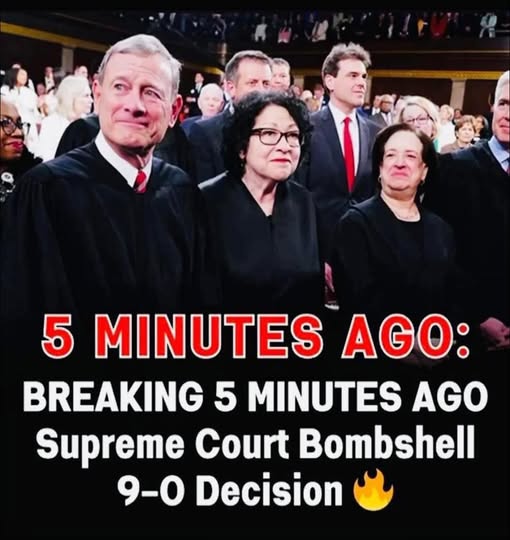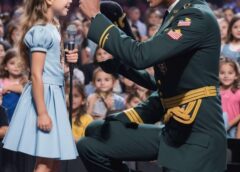The U.S. Supreme Court has decided it will not hear the appeal of a Massachusetts student who was barred from wearing a T-shirt to school that read, “There are only two genders.” The decision effectively leaves in place the rulings of lower federal courts, which sided with the school district and held that the restriction didn’t violate the student’s First Amendment rights.
But the refusal wasn’t unanimous. Justices Clarence Thomas and Samuel Alito made it clear they disagreed with the Court’s decision to stay out of the fight. Both argued that the lower courts mishandled the case and twisted long-standing First Amendment standards. Alito, joined by Thomas, emphasized that if a school is free to teach students about social topics like LGBTQ+ rights or gender identity, then it must also make room for opposing viewpoints — even those that spark controversy or discomfort. In his words, “If a school sees fit to instruct students of a certain age on a social issue like LGBTQ+ rights or gender identity, then the school must tolerate dissenting student speech on those issues.”
The case centers on L.M., a middle-school student in Middleborough, Massachusetts. Because he’s a minor, his full identity remains private. His guardians, Christopher and Susan Morrison, filed a lawsuit in 2023 after school administrators told the student he couldn’t wear the shirt. When he tried wearing a second shirt that read “There are censored genders,” that one was also banned. The Morrisons argued that the school violated the standard set by the Supreme Court in the 1969 Tinker v. Des Moines decision — the landmark ruling that protected students who wore black armbands to protest the Vietnam War, famously declaring that students do not “shed their constitutional rights at the schoolhouse gate.”
In their lawsuit, the Morrisons said the school was opening the door to selective censorship and viewpoint discrimination. They argued that the district’s stance — banning speech because it might cause “negative psychological impact” or because officials found it “demeaning” — essentially rewrites the First Amendment. Their complaint said the policy “gives schools a blank check to suppress unpopular political or religious views,” and warned that the reasoning used by the lower courts flips Tinker on its head.
Representing the student is the Alliance Defending Freedom (ADF), a prominent Christian conservative legal group known for bringing — and often winning — high-profile cases on religious liberty, gender, sexuality, and speech rights. ADF argued that the student’s message was political speech, and that political speech has the highest level of constitutional protection. They claim the school banned the shirt not because it caused disruption, but because administrators disagreed with the message.
The school district tells a different story. Their attorneys say ADF is “attempting to rewrite the facts,” and ignoring sworn statements from school staff at Nichols Middle School. Those statements outline the broader context administrators were dealing with: a young student body, ongoing mental-health struggles among transgender and gender-nonconforming students, and specific history of bullying incidents involving vulnerable kids. According to the district, the shirt wasn’t just a political statement — it was a message that directly impacted the safety and mental well-being of other students, some of whom were already dealing with suicidal ideation.
Administrators said the shirts created a distraction in the school environment and inflamed tensions. Some transgender students reported feeling targeted, anxious, or unsafe. The district stressed that middle-school students are still developing emotionally and socially, and that the school has a responsibility to protect the wellbeing of every child in the building. They argued that allowing the shirts would have undermined that responsibility.
While the Supreme Court declined this case, the justices will address a different, much larger issue this term: whether bans on gender-affirming care for minors violate federal protections against sex discrimination. The specific case involves Tennessee, but the ruling could ripple across the country. Around half of all states with Republican-controlled legislatures have passed similar bans. Whatever the Court decides will reshape the legal landscape surrounding transgender rights for years to come. A decision is expected by early summer.
The Court has also been making waves in a separate dispute — one involving government transparency and an agency created by former President Donald Trump. Last week, the Court stepped in to protect the new Department of Government Efficiency (DOGE) from complying with immediate freedom-of-information requests. DOGE was created through Executive Order 14158 on Trump’s first day in office, with the stated purpose of slashing government waste and “modernizing federal technology” to improve efficiency.
Lower courts had ordered DOGE to start releasing certain records tied to an ongoing lawsuit. Now, Chief Justice John Roberts has issued an administrative stay, pausing those orders while the Supreme Court reviews the case. He offered no explanation, which only fueled critics’ frustration. The stay doesn’t resolve anything — it simply freezes action and buys time.
Roberts wrote only one line beyond the basic order: the lower-court rulings “are hereby stayed pending further order.” For transparency advocates, it’s yet another roadblock in a long struggle to force the new agency into the open. For DOGE, it’s a temporary shield while it tries to keep its internal workings confidential.
All of this — the T-shirt debate, the transgender-care case, and the DOGE transparency fight — underscores how deeply the Supreme Court continues to shape cultural, political, and institutional battles across the country. And even when the justices choose not to take a case, their silence can be just as consequential as their rulings.
In the Massachusetts dispute, the Court’s refusal leaves the lower-court decision intact: schools can restrict student speech they believe directly undermines the safety or emotional wellbeing of vulnerable classmates, especially in younger grades. Whether that standard will hold in future cases — or whether future courts will revisit the issue — remains an open question. But for now, the message is clear: the First Amendment still applies inside schools, but schools have broad authority to decide when student expression crosses the line from opinion into disruption.




